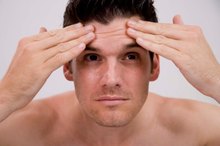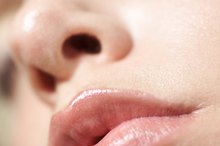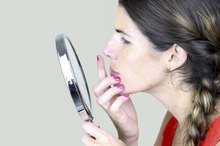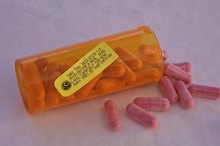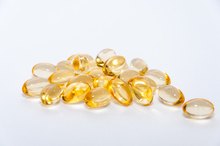What does fact checked mean?
At Healthfully, we strive to deliver objective content that is accurate and up-to-date. Our team periodically reviews articles in order to ensure content quality. The sources cited below consist of evidence from peer-reviewed journals, prominent medical organizations, academic associations, and government data.
The information contained on this site is for informational purposes only, and should not be used as a substitute for the advice of a professional health care provider. Please check with the appropriate physician regarding health questions and concerns. Although we strive to deliver accurate and up-to-date information, no guarantee to that effect is made.
Acne and shingles are two distinct conditions that can significantly alter the health and appearance of your skin. Acne is caused by inflammation related to the excess skin oil, clogged pores and P. acnes bacteria. Shingles stems from the after effects of infection with varicella-zoster, the same virus that causes chickenpox.
Acne Basics
The American Academy of Dermatology lists skin abnormalities associated with acne that include:
- blackheads
- whiteheads
- pimples
- pus-filled pimples called pustules,
- severe lesions called nodules or cysts
The specific symptoms associated with your acne vary according to the precise location of skin inflammation. Milder blackheads and whiteheads result from inflammation near your skin’s surface. Moderate pimples and pustules result from inflammation further below your skin. Nodules and cysts result from deep inflammation processes.
- The American Academy of Dermatology lists skin abnormalities associated with acne that include: * blackheads
* whiteheads
* pimples
* pus-filled pimples called pustules,
* severe lesions called nodules or cysts The specific symptoms associated with your acne vary according to the precise location of skin inflammation. - Milder blackheads and whiteheads result from inflammation near your skin’s surface.
Shingles Basics
Difference Between Hives & Shingles
Learn More
The initial development of shingles begins when virus particles from a chickenpox infection enter your nervous system and go dormant, according to the National Institute of Neurological Disorders and Stroke, or NINDS 1. If and when these particles reactivate, they travel back down the nerve pathways to the surface of your skin, where they multiply until they trigger the rash that marks the onset of an active shingles outbreak.
Acne Factors
If you develop acne, numerous factors may affect its extent or severity, the American Academy of Dermatology reports. Examples include your specific genetic background, emotional stress levels, hormone activity, menstrual activity and the use of cosmetics that clog the pores of your skin. While eating certain foods will not cause acne, aggravating foods may worsen your symptoms. Each individual has different food triggers, and you will need to take the time to discover your own. In some cases, the presence of food-related oil on your skin can contribute to worsening acne.
- If you develop acne, numerous factors may affect its extent or severity, the American Academy of Dermatology reports.
- In some cases, the presence of food-related oil on your skin can contribute to worsening acne.
Shingles Symptoms
How to Treat Acne With Hydrocortisone
Learn More
The main symptom of shingles is the development of a rash on affected skin, the NINDS reports. Outbreaks of the disorder typically occur on one side of your torso, near your waist. Depending on your particular circumstances, initial signs of shingles may include tingling, burning pain, itchiness or numbness. Within a week, fluid-filled blisters will appear. Individuals with shingles may develop pain that ranges from moderate levels of discomfort to an extreme hypersensitivity that can be triggered by even slight touch or wind exposure.
- The main symptom of shingles is the development of a rash on affected skin, the NINDS reports.
- Depending on your particular circumstances, initial signs of shingles may include tingling, burning pain, itchiness or numbness.
Acne Treatment
The American Academy of Dermatology lists potential treatments for your acne symptoms that include topical medications containing salicylic acid, sulfur, benzoyl peroxide or resorcinol; oral antibiotics; estrogen-containing birth control pills; corticosteroid injections; and a vitamin-A related compound called isotretinoin. Prompt treatment of your symptoms can reduce acne’s effects and limit or prevent the development of acne-related scarring.
Shingles Treatment
The main treatment for shingles is the prompt use of antiviral drugs such as famcyclovir and acyclovir, the NINDS explains. You may also receive topical medications, anticonvulsants, steroids or antidepressants to reduce the effects of shingles-related nerve damage. With treatment, shingles symptoms frequently resolve within in a period of three to five weeks. However, if you have a depressed immune system, it may be much more difficult to treat a shingles outbreak.
- The main treatment for shingles is the prompt use of antiviral drugs such as famcyclovir and acyclovir, the NINDS explains.
- However, if you have a depressed immune system, it may be much more difficult to treat a shingles outbreak.
Related Articles
References
- National Institute of Neurological Disorders and Stroke: NINDS Shingles Information Page
- Centers for Disease Control and Prevention. Shingles (Herpes Zoster) Signs & Symptoms.
- John AR, Canaday DH. Herpes Zoster in the Older Adult. Infect Dis Clin North Am. 2017;31(4):811-826. doi: 10.1016/j.idc.2017.07.016
- Yun H, Xie F, Baddley JW, Winthrop K, Saag KG, Curtis JR. Longterm Effectiveness of Herpes Zoster Vaccine among Patients with Autoimmune and Inflammatory Diseases. J Rheumatol. 2017;44(7):1083-1087. doi: 10.3899/jrheum.160685
- Cohen KR, Salbu RL, Frank J, Israel I. Presentation and Management of Herpes Zoster (Shingles) in the Geriatric Population. P T. 2013;38(4): 217-224, 227.
- Galetta KM, Gilden D. Zeroing in on zoster: A tale of many disorders produced by one virus. J Neurol Sci. 2015;358(1-2):38-45. doi: 10.1016/j.jns.2015.10.004
- Blank LJ, Polydefkis MJ, Moore RD, Gebo KA. Herpes zoster among persons living with HIV in the current antiretroviral therapy era. J Acquir Immune Defic Syndr. 2012;61(2):203-7. doi: 10.1097/QAI.0b013e318266cd3c
- Mallick-searle T, Snodgrass B, Brant JM. Postherpetic neuralgia: epidemiology, pathophysiology, and pain management pharmacology. J Multidiscip Healthc. 2016;9:447-454. doi: 10.2147/JMDH.S106340
- Johnson RW, Bouhassira D, Kassianos G, Leplège A, Schmader KE, Weinke T. The impact of herpes zoster and post-herpetic neuralgia on quality-of-life. BMC Med. 2010;8:37. doi: 10.1186/1741-7015-8-37
- Sampathkumar P, Drage LA, Martin DP. Herpes zoster (shingles) and postherpetic neuralgia. Mayo Clin Proc. 2009;84(3):274-80.
- Pereira LB. Impetigo - review. An Bras Dermatol. 2014;89(2):293-9. doi: 10.1590/abd1806-4841.20142283
- Gershon AA, Breuer J, Cohen JI, et al. Varicella zoster virus infection. Nat Rev Dis Primers. 2015;1:15016. doi: 10.1038/nrdp.2015.16
- Naveen KN, Pradeep AV, Kumar JS, Hegde SP, Pai VV, Athanikar SB. Herpes zoster affecting all three divisions of trigeminal nerve in an immunocompetent male: a rare presentation. Indian J Dermatol. 2014;59(4):423. doi: 10.4103/0019-5154.135548
- Opstelten W, Zaal MJ. Managing ophthalmic herpes zoster in primary care. BMJ. 2005;331(7509):147-51. doi: 10.1136/bmj.331.7509.147
- Jeon Y, Lee H. Ramsay Hunt syndrome. J Dent Anesth Pain Med. 2018;18(6):333-337. doi: 10.17245/jdapm.2018.18.6.333
- Kim SH, Choi SM, Kim BC, et al. Risk Factors for Aseptic Meningitis in Herpes Zoster Patients. Ann Dermatol. 2017;29(3):283-287. doi: 10.5021/ad.2017.29.3.283
- Saxena A, Khiangte B, Tiewsoh I, Jajoo UN. Herpes zoster encephalitis presenting as multiple cerebral hemorrhages - a rare presentation: a case report. J Med Case Rep. 2013;7:155. doi: 10.1186/1752-1947-7-155
- Teo HK, Chawla M, Kaushik M. A Rare Complication of Herpes Zoster: Segmental Zoster Paresis. Case Rep Med. 2016;2016:7827140. doi: 10.1155/2016/7827140
- American Academy of Dermatology. Cellulitis: Overview.
- American Academy of Ophthalmology. Herpes Zoster Ophthalmicus.
- Centers for Disease Control and Prevention. Shingles (Herpes Zoster): Clinical Overview. Feb 21, 2018.
- Mayo Clinic. Postherpetic Neuralgia. Sept 16, 2015.
Resources
Writer Bio
M. Gideon Hoyle is a writer living outside of Houston. Previously, he produced brochures and a wide variety of other materials for a nonprofit educational foundation. He now specializes in topics related to health, exercise and nutrition, publishing for various websites.

